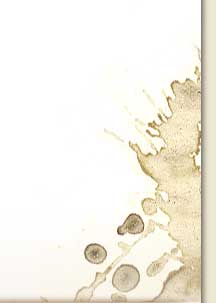
ORIGINALLY PUBLISHED IN ‘THE NEW YORK TIMES’ MAGAZINE
NO-ONE EXPECTED it to end with killing. In 1972, I was a junior TV journalist assigned to watch events in Northern Ireland, which that weekend happened to include a protest march in Derry. At most, I figured there would be the customary low-level standoff between protesters and the army, some stone-throwing and tear gas. But once the shooting started, that day was destined to be known as Bloody Sunday.
My nationalist sources and the police had forecast no real trouble, so I told my bosses at the London network that I would not need a film crew. Like everyone else, I was taken completely by surprise when paratroops burst through barriers, ran toward the crowd and almost instantly began firing. This is the last damn straw! I remember thinking as I crushed my nose into the roadway’s asphalt with high-velocity bullets cracking and whining over me. I was 23 and scared witless, but my thoughts came embroidered with bravado. I had covered enough of ”the troubles” to have been threatened at gunpoint by Protestant paramilitaries and another time been forced to run from I.R.A. sniper fire. Now, I blustered to myself, it is my own national army who’s firing at me.
Huddled behind a rubble barricade, I felt as foolish and professionally humiliated as I felt frightened. My job, after all, was to make television, and all I had was a note pad. Wanting to do something of use, I scribbled notes: the time according to my cracked watch face (4:16 p.m.), the fractured sobbing of a woman nearby, the number of shots I could count — a near-impossible task since they overlapped. One recollection is stronger than any other — a soldier in a red beret, down on one knee, leveling his self-loading rifle toward me and shooting.
When a break in the firing came, I ran from the danger area. Around me, others lay still; whether they were hit or just being cautious I could not tell. Thirteen people — all Catholic residents of Derry — were shot dead that cold afternoon, five young men on my side of the barricade. A 14th later died of his wounds.
A few weeks later, I gave my first official account of my experience at a public inquiry. I was nervous, acutely conscious of my youth among the suave lawyers and military brass. Firmly assured, though, of the truth of my evidence, I held up creditably against hostile cross-examination by the army’s lawyer. But the inquiry ended with the army’s being in effect exonerated. The strongest criticism from the chairman, an ex-army officer, was that some shooting had ”bordered on the reckless.” Actually, 108 rounds had been fired in 10 minutes.
IN 1998, TONY BLAIR called for a fresh inquiry (at which I will testify this month) in part to address the Catholic community’s lasting sense of outrage. Investigators took another deposition last year and asked a simple question — one I had never been asked before — about my most vivid memory, the soldier firing toward me. ”What was on his head?” Without a moment’s pause, I recalled his red beret. But as all the photographs clearly demonstrate, he was wearing a helmet. After checking more pictures and news film, I have come to see that — however certain my recollection — I was simply wrong.
Watch a section of the documentary “An Unreliable Witness“, with David Tereshchuk and Bloody Sunday fellow-witness Don Mullan. [Produced and directed by Michael McHugh]
I may have fused two memories into one, or given the soldier some features of a nearby senior officer who was wearing a beret. For us in the crowd that day, realizing that the paratroops of the Parachute Regiment with their distinctive red berets had crashed onto the scene was crucial. Amid the panic, or afterward as I struggled to make sense of everything, that detail stuck with me. At least that is how I can best explain it.
As I step into the witness box again — just one day after Bloody Sunday’s anniversary — I fear that it will merely be another chance for my own army’s lawyers to attack my credibility. Perhaps even more unsettling, I realize that I hardly recognize that unshakably sure young man of 1972.
Today, I’m older, possibly wiser, but so much less certain — not only about the precise details of what I saw but also about how I have observed the world for more than 30 years. As a reporter, I have always insisted that facts are facts and supposition is something else. My own involuntary fudging of the narrative has harshly mocked that ingrained belief. I winced when the new inquiry’s chairman announced, ”Reporters often make excellent witnesses.”
For all I have recently admitted about the malleability of memory, I still have no doubt that 29 years ago British soldiers opened fire, unprovoked, on innocent British citizens. But unlike the hordes of conspiracy theorists that Bloody Sunday has attracted, I still have no idea why. My life’s effort to extract hard truth from its messy surroundings has been severely humbled by the essential messiness of my brain. And yet, even with an indisputable set of photographs in front of me, I close my eyes and still see a red beret.

